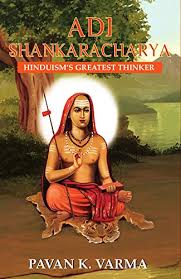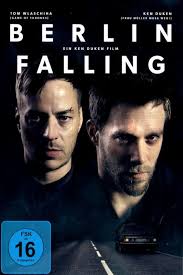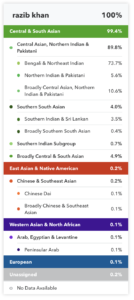Please keep the other posts on topic. Use this for talking about whatever you want to talk about.
Month: October 2019
The Shias of Kashmir
From our regular contributor, Dr Hamid Hussain.
In my last piece about Kashmir, I briefly mentioned Shia factor in Kashmir in current context and Ahmadi factor in historical context. Many otherwise well informed individuals admitted that they had little idea about these. Others with more direct interaction with Kashmir issue asked questions and this is in response to these exchanges. Enjoy if you are bored of black and white narratives on the subject and interested in ‘fifty shades of grey’.
Hamid
Shia of Kashmir
Hamid Hussain
Shia of Kashmir has a unique history. There were two groups of Shias who migrated to Kashmir from present day Iran and Iraq in fifteenth and sixteenth centuries. One group escaped persecution and other were missionaries. Some artisan classes also joined these groups. Local conversion due to efforts of missionaries increased Shia numbers. In Gilgit-Baltistan area with geographic links to Badakhshan province of Afghanistan and Tajikistan, Ismaili missionaries were successful in small pockets while mainstream Ath’na Asha’ari (followers of twelve Imams) missionaries were successful in areas that are now part of Indian Controlled Kashmir (ICK). Separation of Gilgit-Baltistan from Pakistan Controlled Kashmir (PCK) which is ethnically and linguistically different from Kashmiris left no significant Shia population in PCK.
In ICK, there are about one million Shia out of a total Muslim population of 8.5 million. Shia are geographically and politically separated in ICK. Sparsely populated Ladakh which is now separated from Jammu & Kashmir (J&K) as Union territory has equal numbers of Buddhists and Muslims. In Kargil area, ninety percent of Muslim population is Shia numbering about 125’000. There are small numbers of Sunnis in Drass area. Remainder Shia population is concentrated in the Valley. Continue reading The Shias of Kashmir
Browncast Episode 70, Urbane Cowboys on the Right
 Another BP Podcast is up. You can listen on Libsyn, iTunes, Spotify, and Stitcher. Probably the easiest way to keep up the podcast since we don’t have a regular schedule is to subscribe at one of the links above.
Another BP Podcast is up. You can listen on Libsyn, iTunes, Spotify, and Stitcher. Probably the easiest way to keep up the podcast since we don’t have a regular schedule is to subscribe at one of the links above.
You can also support the podcast as a patron. The primary benefit now is that you get the podcasts considerably earlier than everyone else.
Would appreciate more positive reviews! It’s been a really really long time that we’ve been on 30 iTunes positive reviews. I notice that Alton Brown’s Browncast has 30 reviews on Stitcher alone! Help make us the biggest browncast there is!
This week I (Razib) talk to Josiah & Doug of The Urbane Cowboys about the American Right. We hit impeachment, Syria, and The Dispatch.
If you enjoy the Browncast, I do recommend The Urbane Cowboys!
Sex and Violence in Tibetan Buddhism, a book review:
rise and fall, hubris and nemesis, a frequent pattern in human existence ..
.
Sex and Violence in Tibetan Buddhism: The Rise and Fall of Sogyal Rinpoche
by Mary Finnigan & Rob Hogendoorn
Jorvik Press, 199 pp. (2019)
The book benefits enormously from having twin authors — Rob Hogendoorn provides invaluable biographical and analytical material, credited to him as it occurs, while Mary Finnegan’s contributions relate, in her own voice, her experiences. Both authors are Buddhist practitioners, both have researched the sexual abuse claims around Sogyal for years — claims which have since been admitted by Rigpa, Sogyal’s teaching organization.
**
Mary Finnigan & Rob Hogendoorn’s book title hits two human keynotes. You’ll find them intertwined for crowd-pleasing reasonsd in Game of Thrones:
It’s a question that’s been asked of Game of Thrones as long as the HBO series has been on the air: Why so much sex and violence?
But Tibet? Perfect Tibet of our wishes? Tibet of the revered Dalai Lama? Tibet of the lamas who create intricate mandalas of colored sands — then brush them away in a gesture of impermanence and carry the dust to rivers which wash them out to sea? Shangri-La — in fact not fiction?
There’s a lot that’s wonderful to Tibetan Buddhism, and the better it looks and actually can be, the easier it is for Westerners to fall for the trap of projection — to believe, in this case, in the impeccability of Sogyal Lakar, sometimes titled Rinpoche, or Precious-One.
**
It’s unwise in general to speak ill of the recent dead, and Sogyal died in August 2019. Yet his story must be told, because unhappy though it is, the telling can help us avoid the illusion of a supposedly great lama — second only to the Dalai Lama in popularity in the west — who was in fact assaulting his female students sexually on numerous occasions across decades.
That’s the tale Mary Finnigan, herself a practitioner of Dzogchen — Sogyal’s own form of Tibetan Buddhism — details in collaboration with her co-author Rob Hogendoorn in this book.
The accusations against Sogyal, of “sexual, physical and emotional abuse”, led to the Dalai Lama declaring Sogyal “disgraced”. The Charity Commission for England and Wales disqualified two of the Trustees of Sogyal’s organisation, the Rigpa Fellowship, in the UK because they covered up “knowledge of instances and allegations of improper acts and sexual and physical abuse against students”..
**
But although sex, violence, and sexual violence are at the heart of the anguish Sogyal inflicted on unwary students, there’s another side to Sogyal’s story that Finnigan and Hogendoorn illuminate — the story of the son of a wealthy family, in contact with a senior Dzogchen lama and taken under his wing, who learned little that might have qualified him to be a teacher of that tradition, yet who managed to wangle his Tibetan nationality into the appearance of a gifted and highly educated lama on his arrival in England.
It’s a fascinating and heart-rending story — heart-rending is the word used by the New York Times in its obit for Sogyal — throwing light on Tibetan Buddhism itself, an astonishing mesh-work of visualizations and compassionate insight; the vicious politics that have long existed within the cloak of lamaism, and which the Dalai Lama has partially uncloaked; an archaic gender differential as power differential; and in general, eastern wisdom meets western credulity.
**
Sogyal’s wealthy family connection gives him access to a high lama, Chokyi Lodro, and his presence at Lodro’s side gives him in turn the title of Tulku, which often but not always signifies the reincarnation of some previous high lama, and is always a term of respect.
An authentically scholarly Tibetan meditation master, Dudjom Rinpoche, knows Sogyal has little to no education in the finer points of Tibetan philosophy or meditation, but considers him someone a western student might pick up some hints from — crossing the cultural divide as it were.
Sogyal , moving to the west, is on his way.
**
The years pass, just being a Tibetan guru in the west is sexy in the broad sense in which Lamborghinis and orchids are sexy: scholars of religion call it charisma. And when young and impressionable women become devotees of supposed high lamas — and when there are rumors, not without foundation, of Tibetan Vajrayana Buddhism including tantra, or spiritual-sexual practices, feelings and expectations can get very confused.
The main thrust of Mary and Rob’s book is to tell the rise and fall of Sogyal Lakar, his rise by that wider “sexy” quality we term charisma, his fall by discovery of the abuses of both spirituality and sex he’s inflicted on so many of his students across the years. I won’t go into the details, it’s their story to tell, and they tell it with the probing integrity of journalists as well as the sincerity of practitioners.
**
It has to be said that young Western women stood in line to sleep with Trungpa [“a formidably intelligent iconoclast” meditation master] and were usually eager to oblige with Sogyal. They became known as dharma groupies and sex with a Rinpoche became almost as much of a status symbol as plaster casting Mick Jagger.
Oh, Mary can write!
The problem was the abuse at Sogyal’s “feudal” court.
**
The Heart Sutra of Mahayana Buddhism teaches something often translated:
form is emptiness, emptiness is form
where emptiness is better understood as <em>void, and void as devoid of self-establishing nature — so that these lines might be rendered:
Form is devoid of self-establishing nature,
absence of self-establishing nature is form.
**
Sogyal — no great meditation master, it would seem — has another form of emptiness. Whatever he may have thought, he lacked that compassion which is the fruit of deep meditative practice. And so he was able to enact violence on his students.
But we may witness that emptiness in another arena, that of scholarship.
Early on in Sogyal’s time in the west, Dudjom Rinpoche is giving a talk to a hundred eager students, packed into a room intended for an average London family, and Sogyal is translating for him. Mary was there, sitting next to her then boyfriend John Driver, a linguist gifted in Tibetan, and noted that John was frowning. She writes:
During the first lunch break, John steered me into a cafe down the road. He was quite angry.
“Sogyal is not translating correctly,” he said. “Either he’s interpreting Rinpoche’s words into what he thinks is suitable for Westerners or he doesn’t understand what Dudjom is saying.”
**
It was a foreshadowing. Ever since Walter Evans-Wentz published an early English translation of The Tibetan Book of the Dead in 1927, the gold-embossed green cloth volume has been a choice text to set beside the Chinese I Ching in pride of place on one’s desk or shelf. Come 1992, and The Tibetan Book of Living and Dying was published, updating the timeless Buddhist classic, personalizing it with some of Sogyal’s own tales, made “accurate” to some degree by the inclusion of questions and answers from distinguished Tibetan masters such as Dilgo Khyentse Rinpoche and the Dalai Lama together with western masters of hospice living and dying such as Elizabeth Kubler-Ross — but, but–
As one student who was around at the time put it:
Could anyone who knew Sogyal imagine him being able to quote the German mystical poet Rainer Maria Rilke? Or the Sufi sage, Jalaluddin Rumi?
No, the “editor” who’d have provided those quotes, and much more of the content and form, indeed the very flowing language of the book, would have been Andrew Harvey, Oxford scholar extraordinaire and author of The Way of Passion: A Celebration of Rumi and other works.
So much for a great book — and it was and is great, and Sogyal deserves some, though by no means all, credit for it.
**
To sum up:
Sex and violence are paired in the book’s title. The problem with the sex is not that it was sex — Sogyal was no more a monk than Trungpa was, and it was often consensual. The problem was in the tirades, the humiliations, the violence, the abuse — delivered under cover of spiritual authority in violation of trust across a power and gender differential.
The scholarship is, well, Andrew Harvey’s, and Padmasambhava’s, and Kubler Ross’.
**
I met Sogyal once. I asked him about the meaning of “skillful means”, and he responded “not entering or leaving a room through the wall, when there’s a door available.” He seemed pleasant enough. Trungpa Rinpoche I befriended at Oxford, and took to visit friends of mine at Prinknash Abbey near Gloucester: later he wrote that the visit had shown him the possibility of living the contemplative life in the west. He opened the first Tibetan monastery in the west shortly thereafter, Samye Ling in Scotland. And Mary is an old friend from hippie days.
As I indicated above, Mary and Rob have a story to tell, and they can tell a story.
Sogyal himself is no longer with us. He has entered, perhaps, the bardo, that liminal space between lives about which The Tibetan Book of the Dead — and to some extent its Sogyal reincarnation, The Tibetan Book of Living and Dying — are written.
Go, read.
Open Thread – Brown Pundits
Please keep the other posts on topic. Use this for talking about whatever you want to talk about.
Commentary on Adi Shankara
 It seems Adi Shankaracharya: Hinduism’s Greatest Thinker is now $0.99 on Kindle, so I got a copy. From what little I know the subhead is warranted, so understanding Adi Shankara goes a long way to understanding elite Hinduism.
It seems Adi Shankaracharya: Hinduism’s Greatest Thinker is now $0.99 on Kindle, so I got a copy. From what little I know the subhead is warranted, so understanding Adi Shankara goes a long way to understanding elite Hinduism.
On the other hand, I have a dim view of most religious philosophy personally. But, it is important that people take such thinking seriously, as understanding it is a part of understanding humanity. For example, I can acknowledge that Thomas Aquinas was a brilliant thinker, while at the same time thinking his mind was wasted.
Film Review: Drone
Film review from Major Aghan Humayun Amin. (Spoilers ahead)
DRONES
REVIEW ESSAY
Last night I watched a movie named “ Drone” with immense interest.
Drones have been a major part of my research since 2006 when I personally and closely saw some drone strikes while serving as a consultant in Afghanistan and Pakistan. My main client were Canadians and to be specific SNC Lavalin , at that time Canada’s largest consulting company and worlds fifth largest. The movies director is a Canadian citizen which multiplied my interest as Canada sometimes moves opposite United States and has been doing so with varied levels since loyalists fled to Canada after the rebellion of the American Colonies.
The first issue with this movie which could be very hard hitting and a block buster is that it misses the small details , which is a case of lack of common sense and sweeping judgements which were entirely avoidable.
The first image failure occurred when while claiming to depict Pakistans wild west Waziristan region the area filmed and shown was Pakistans biggest city Karachi. To deliver the most unkindest cut of all as Shakespeare would have described it , the first shot titled Waziristan shows sky scraper buildings in Karachi rather than mud houses and totally opposite images for which Waziristan is famous and known. Continue reading Film Review: Drone
Film Review: Berlin Falling
Review from Major Agha Humayun Amin. I am sure some of Major Amin’s observations will invite comment 🙂

I was very keen to watch this movie and watching it was a big disappointment.
While the movie is low budget , budget by no means could have reduced it from reaching the stature of greatness if the man who made the movie was more intellectually dishonest !
The entire historic context of this movie is drastically flawed and fallacious.
The movie conveys a German military in Afghanistan that committed serious war crimes , whereas my personal observations having constructed five clinics in Kunduz in 2004-5 and having been involved in CASA 1000 survey passing through Kunduz province where German military was deployed , leads me to the irrevocable and unflinching conclusion that the German military in Kunduz was the most humane military outfit in entire NATO or non NATO forces deployed in Afghanistan.
Now this was entirely avoidable had the author carefully studied the history of German military record in Afghanistan.
As one who lived in Kabul and travelled extensively I found that Afghans loved no foreign country more dearly than Germany who they lovingly referred to as ”ALMAAN” and Turkey.
The reason was simple ! Both these states simply refused to enter areas where the public was hostile to NATO presence. While it is another issue that the German governments reasons for not doing so were based on pure and simple lack of moral courage or strategic resolution , in not annoying the large Muslim population of Germany , the result was positive, at least in terms of human rights. Continue reading Film Review: Berlin Falling
A letter to Gandhi
(In 2017-18, an Indian friend wanted to collect essays from Pakistanis on how they view MK Gandhi across the border. I wrote this short letter to Mr. Gandhi that I recently saw in my collection. Sharing it with the BP community. )
Mohandas Karamchand Gandhi
Birla House,
New Delhi.
Dear Mr. Gandhi,
My name is Abdul Majeed and I am writing to you from the city of Lahore, Pakistan. I have been asked to write about you by an Indian friend of mine and I accepted his proposition. I feel ambivalent writing about you since I have thought about you in myriad ways over the course of my life. I grew up in a conservative Muslim household in a small Punjabi town called Sialkot and first learned about you in the ‘Social Studies’ textbooks taught to schoolchildren. My first impression of you as a person was quite negative since the role assigned to you by virtue of ‘Two Nation Theory’ (or TNT, as I now call it) was that of a Hindu politician who opposed the formation of Pakistan and probably hated Muslims. Like many schoolboys of my age, I idolized Mr. Jinnah, your arch-nemesis and a founding father of Pakistan. For us, Jinnah was the David to your Goliath, a defender of minority rights against all odds, an impeccably dressed man who stood up to the might of Hindus and saved Muslims of India from a cultural annihilation. In our imagination, he was everything you were not. We used to make fun of your attire and your persona. I grew up in a society where violence was the channel through which you expressed your masculinity and thus we thought your non-violent methods were signs of cowardice. I learned that All India Congress, a party you led for many years, did not support the idea of an Independent Pakistan (or a divided India, depending on whom you ask) and refused to believe in Partition even after two separate countries had been established.
My outlook towards history and towards your personality changed when I went to boarding schools in the northern part of the country. While the basic ideological framework remained in place, facts added up through the years. At one point in time, I could recite the whole ‘Pakistan Studies’ book by heart in two hours, including names of the books written by Sir Syed Ahmad Khan, a Muslim educationist and reformer in Nineteenth-century, charter of demands presented by the Shimla deputation to Viceroy of India in 1905, consequences of Bengal’s partition in 1905, Minto-Marley reforms of 1909, Fourteen points of Mr. Jinnah (a proposal for constitutional reform in British India) and the Islamic clauses in Pakistan’s three constitutions. You might be astonished to know that history books in our schools start the story from the Nineteenth century as if nothing happened in this land before. The boarding schools I went to, were located near Mansehra (containing artifacts from two thousand years ago) and Taxila (where the oldest University in the world was once present) respectively, sites containing artifacts from a past I never had. I knew you as a wily politician who duped Muslims during the Khilafat Movement. The word ‘Mahatma’ was used as a prejudicial slur towards anyone ‘Indian’. I often got called by this name because I was a vegetarian.
Years later, I ended up seeing you in a different light. I was roaming the streets of New York City in the immediate aftermath of Hurricane Sandy when I chanced upon a statue of you in Greenwich village. A week after that, I saw another one of your statues at the MLK memorial in Atlanta. I learned about your influence on Martin Luther King Jr. and the strategy of non-violence resistance. It was around this time that I read Arundhati Roy’s foreword to ‘Annihilation of Caste’ and ‘The South African Gandhi: Stretcher-bearer of Empire’. As I grew up, I came around to the idea that human beings contain multitudes and having contradictions is partly what makes us human. On one hand, you paid lip service to the idea of caste in Indian society, on the other, you made public displays of spending time with the untouchable community. You accelerated the fusion of religion and politics in India during the late 1910s and the Khilafat movement and you also held fast when Pakistan was not paid money it was due after partition. You used elements of Hinduism in your political and social message and were eventually gunned down by a Hindu nationalist. You didn’t subscribe to the Two nation theory but the last century proved you wrong. India and Pakistan have grown and keep growing apart as a Sunni state and a Hindu state. Some of your ideas were as controversial then as they are now. You were in favor of treating Nazis with peace and non-violence and you lived to see how that turned out. In Pakistan during the 2000s, some people wanted to talk to the Pakistani Taliban (TTP) and that didn’t go as planned either. The question then is, how does one deal with groups whose founding ideology is based on violence? With this, I’ll leave you in peace in your forever abode.
Greetings from Lahore,
Abdul Majeed Abid
Browncast Episode 69, You’re Southern South Asian!
 Another BP Podcast is up. You can listen on Libsyn, iTunes, Spotify, and Stitcher. Probably the easiest way to keep up the podcast since we don’t have a regular schedule is to subscribe at one of the links above.
Another BP Podcast is up. You can listen on Libsyn, iTunes, Spotify, and Stitcher. Probably the easiest way to keep up the podcast since we don’t have a regular schedule is to subscribe at one of the links above.
You can also support the podcast as a patron. The primary benefit now is that you get the podcasts considerably earlier than everyone else. I am toying with the idea of doing a patron Youtube Livestream chat, if people are interested, in the next few weeks.
Would appreciate more positive reviews!
This episode Razib and previous guest Surya Yalamanchili talk about the updated ancestry composition for South Asians from 23andMe. For nearly a decade we’ve all been 95% “Broadly South Asian.” Now most of you are part Bengali!
